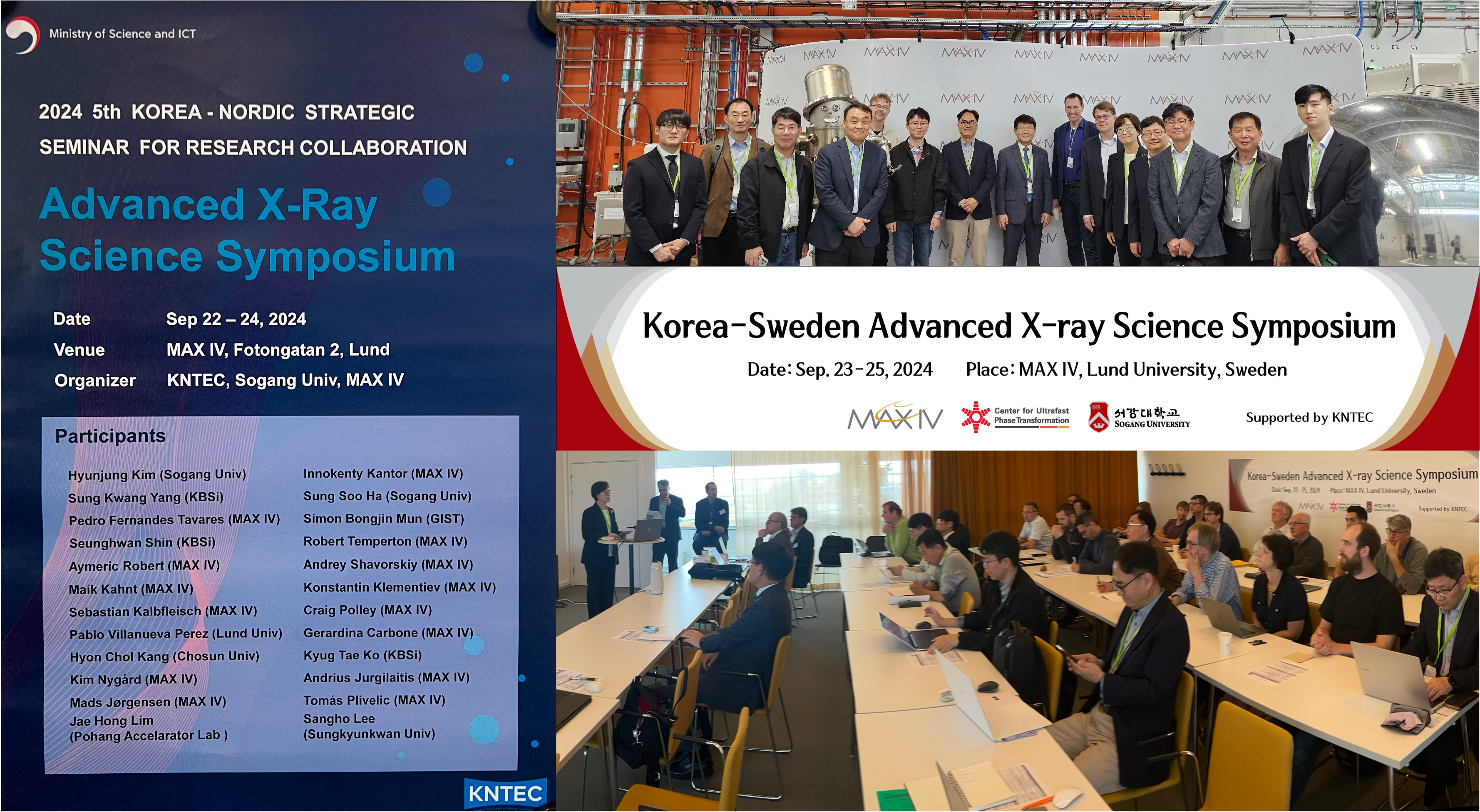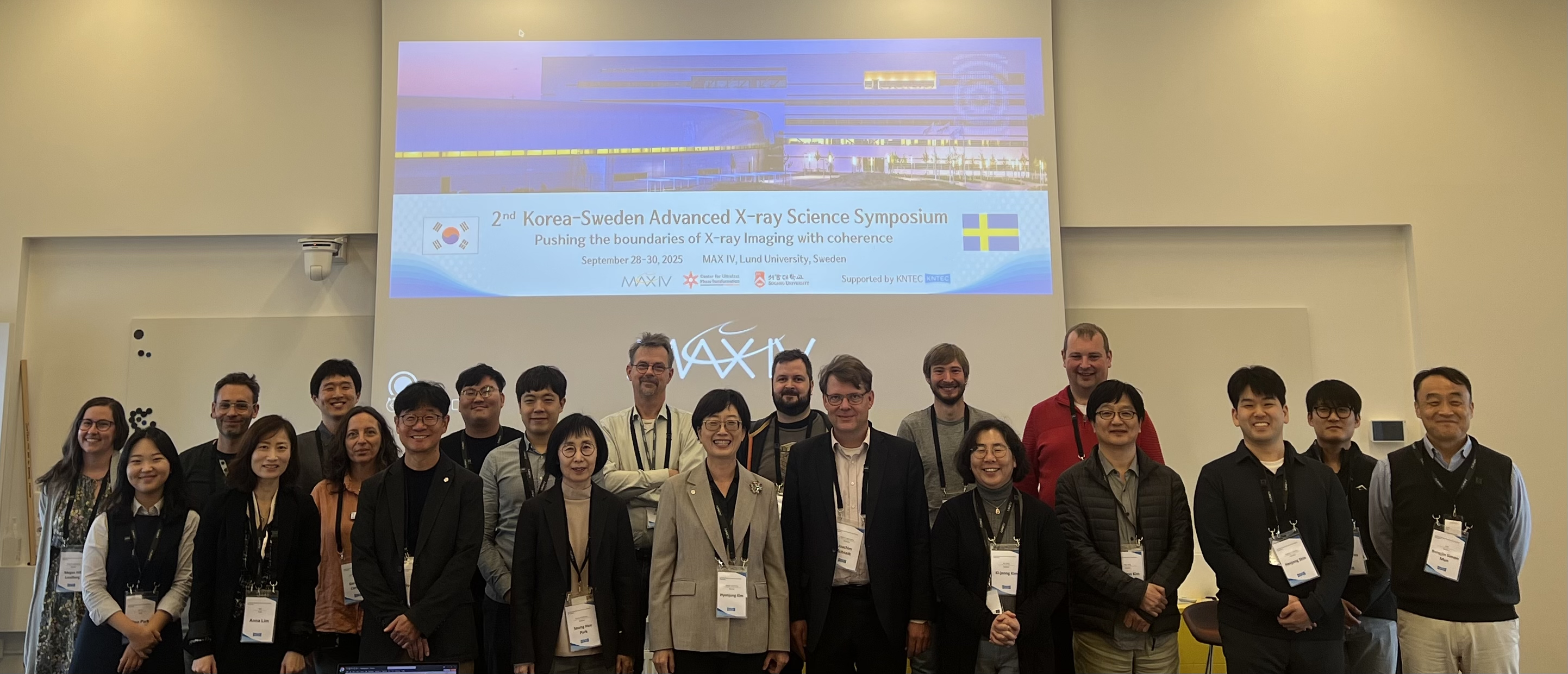- Indico style
- Indico style - inline minutes
- Indico style - numbered
- Indico style - numbered + minutes
- Indico Weeks View
Second Korea/Sweden Advanced X-ray Science Symposium
→
Europe/Berlin
MAX III Meeting Room - Floor 4 (MAX IV Laboratory)
MAX III Meeting Room - Floor 4
MAX IV Laboratory
MAX IV Laboratory
Fotongatan 2
SE-224 84 Lund
Sweden
,
Description
Following the success of the first Korea/Sweden Advanced X-ray Science Symposium, organized in Lund and funded by KNTEC on September 22-24, 2024, the second edition will take place in Lund on September 28-30, 2025.



Pictures from the first Korea/Sweden Symposium in 2024

We want to thank KNTEC for their financial support.



